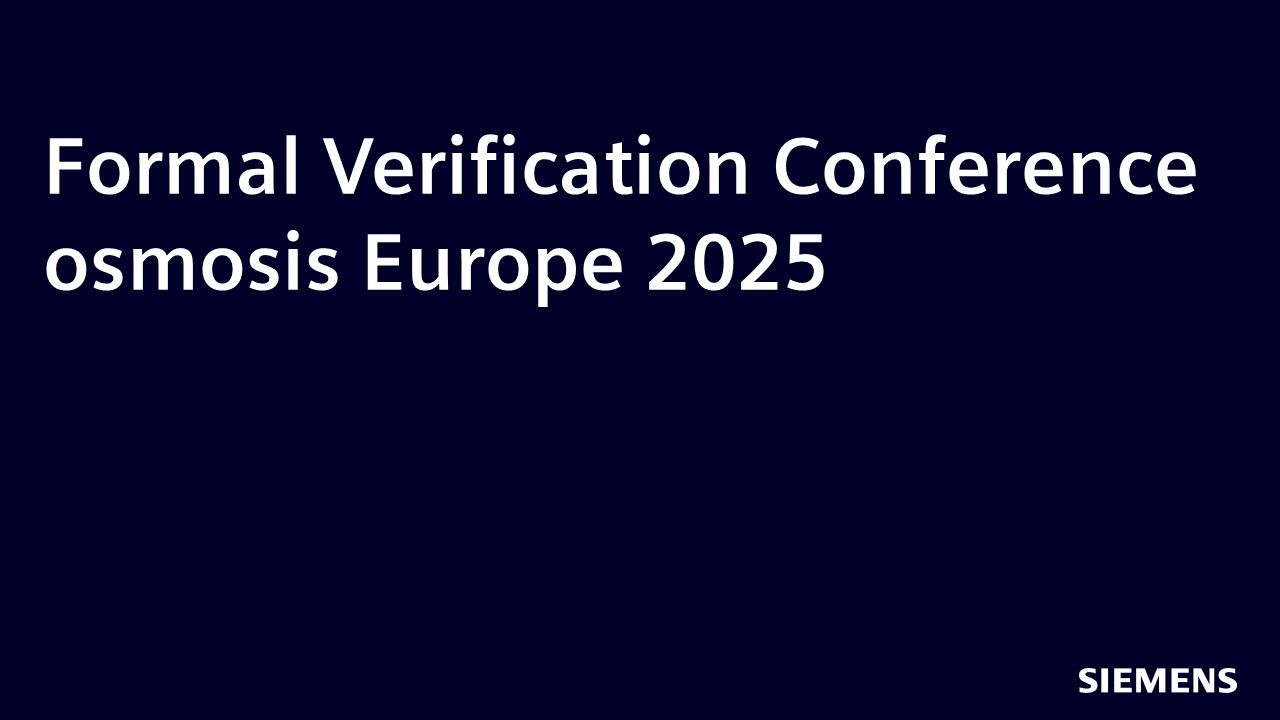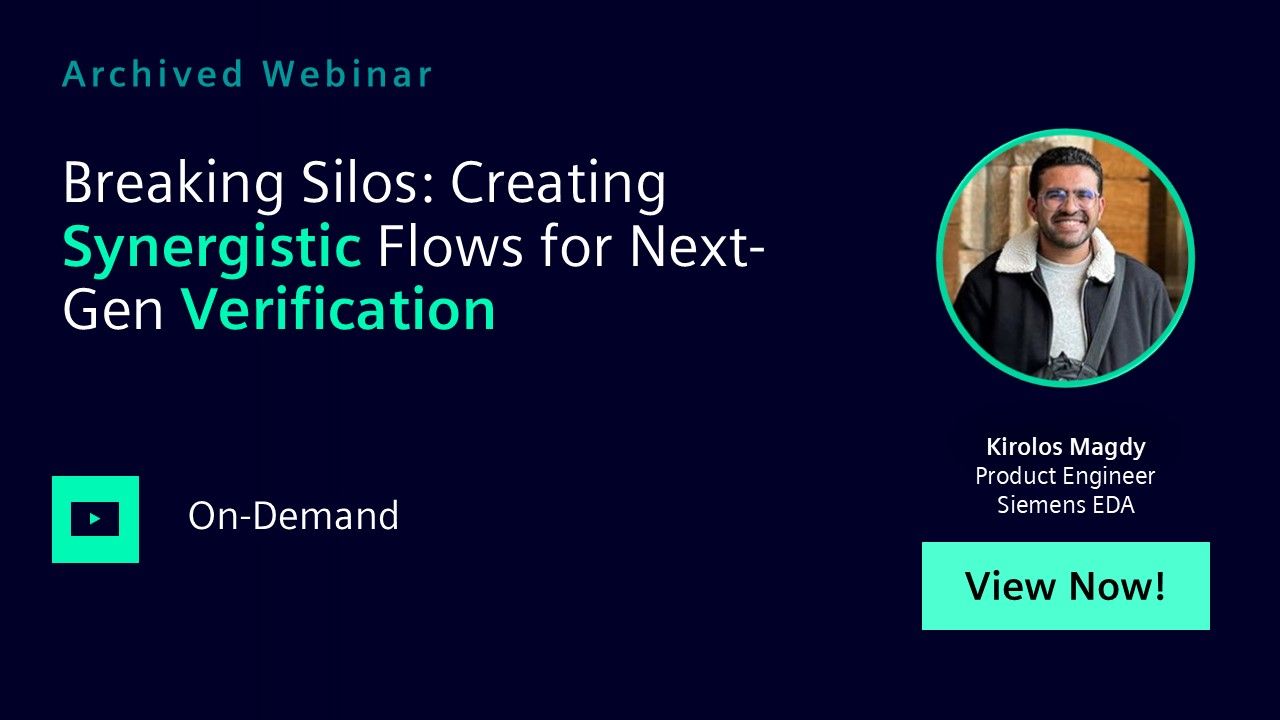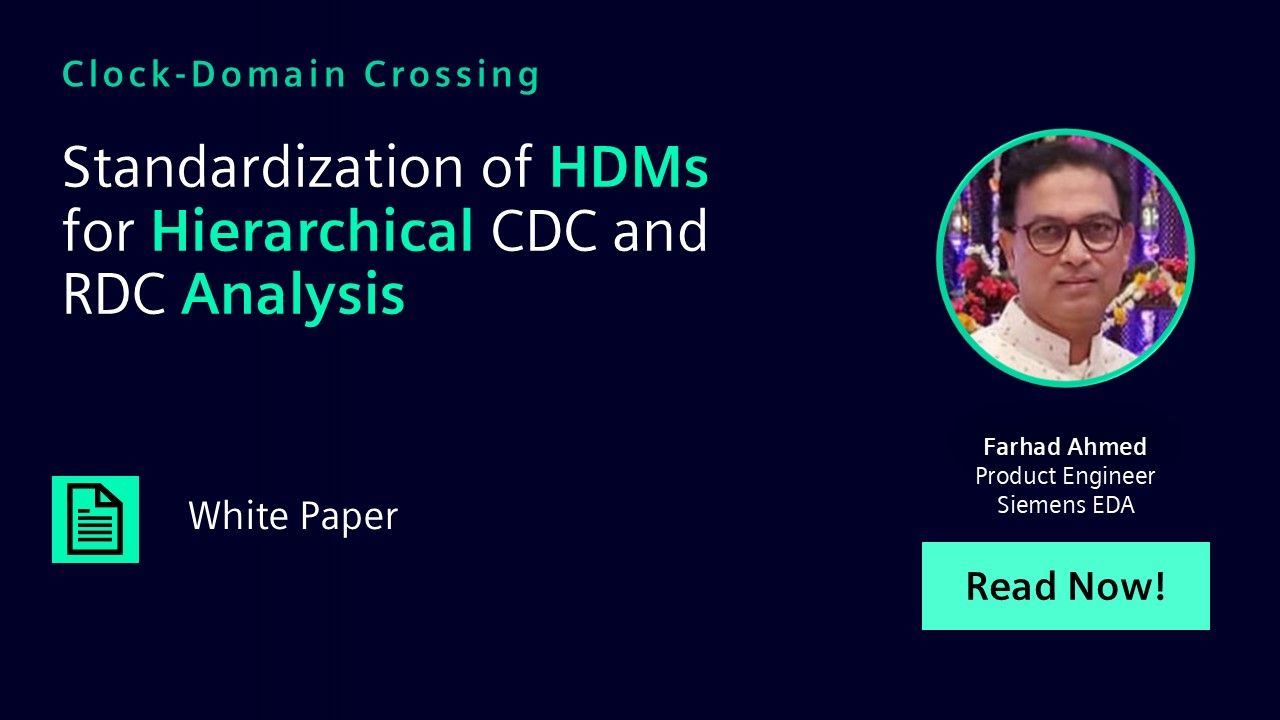Search Results
Filters
Advanced Search
2173 Results
-
Boosting Verification of an IEEE Compliant FPU with Formal and AI Capabilities
Resource (Recording) - Oct 16, 2025 by Zvi Ben Yosef - NextSilicon
-
Boosting Verification of an IEEE Compliant FPU with Formal and AI Capabilities
Resource (Slides (.PDF)) - Oct 16, 2025 by Zvi Ben Yosef - NextSilicon
-
Combining Performance and Formal Security Guarantees for Hardware Accelerators
Resource (Slides (.PDF)) - Oct 16, 2025 by Lucas Deutschmann - RPTU University Kaiserslautern-Landau
-
Combining Performance and Formal Security Guarantees for Hardware Accelerators
Resource (Recording) - Oct 16, 2025 by Lucas Deutschmann - RPTU University Kaiserslautern-Landau
-
New RTL Modeling Constructs in Verilog
Resource (Verification Horizons Blog) - Oct 16, 2025 by Dave Rich
I’ve been packing up my office as Siemens is closing my location. This marks the longest I’ve ever spent in a single office, a whopping 15 years. Coincidentally, I was in the same building earlier with another company, Avant! for an additional 2 years. I’ve got a box of stuff from previous jobs that I rarely unpack. But it happened to go through it and found the proceedings from what was to become the first DVCon in 1992. I doubt these proceedings exist anywhere in digital form.
-
Ground Truth in the Age of AI: Abstract Models as the Anchor of Verification
Resource (Slides (.PDF)) - Oct 16, 2025 by Tobias Ludwig - Lubis EDA
-
Ground Truth in the Age of AI: Abstract Models as the Anchor of Verification
Resource (Recording) - Oct 16, 2025 by Tobias Ludwig - Lubis EDA
-
Adaptable FWHW Formal Co-Verification of SoC RISC-V Components
Resource (Recording) - Oct 16, 2025 by Bryan Olmos - Infineon
The increasing shift towards the RISC-V open-source instruction set architecture requires the development of new design techniques. In recent years, it has been demonstrated that RISC-V designs can be generated in a modular and scalable manner by utilizing metamodeling techniques.
-
Adaptable FWHW Formal Co-Verification of SoC RISC-V Components
Resource (Slides (.PDF)) - Oct 16, 2025 by Bryan Olmos - Infineon
The increasing shift towards the RISC-V open-source instruction set architecture requires the development of new design techniques. In recent years, it has been demonstrated that RISC-V designs can be generated in a modular and scalable manner by utilizing metamodeling techniques.
-
Formally Verifying Security Properties of CHERI Hardware and Software
Resource (Recording) - Oct 16, 2025 by Thomas Bauereiss - University of Cambridge
-
Formally Verifying Security Properties of CHERI Hardware and Software
Resource (Slides (.PDF)) - Oct 16, 2025 by Thomas Bauereiss - University of Cambridge
-
Harnessing AI for Real-world Hardware Verification
Resource (Slides (.PDF)) - Oct 16, 2025 by Matthew Taylor - Doulos
-
Harnessing AI for Real-world Hardware Verification
Resource (Recording) - Oct 16, 2025 by Matthew Taylor - Doulos
-
Stimulus Free Verification of a Clock Bridge Using Static and Formal
Resource (Recording) - Oct 16, 2025 by Kanthi Palaniappan - Nokia
-
Stimulus Free Verification of a Clock Bridge Using Static and Formal
Resource (Slides (.PDF)) - Oct 16, 2025 by Kanthi Palaniappan - Nokia
-

osmosis Europe 2025
Conference - Oct 16, 2025 by Nicolae Tusinschi
The osmosis Europe event is a dynamic platform for exchanging successes achieved through applying formal techniques to overcome verification challenges. It offers a unique opportunity to connect and engage with our accomplished research and development (R&D) experts and participants. The conversations that follow may help you and others improve formal-based verification solutions.
-

Ultra Accelerator Link (UALink) Verification: A Deep Dive with Siemens Avery Verification IP
Webinar - Oct 15, 2025 by Justin Bunnell
In this webinar, you will be introduced to the UALink protocol, focusing on its architecture, key features that enable scalable AI systems, and critical verification challenges. We will then explore the essential capabilities of Siemens Avery UALink Verification IP, designed to ensure complete and efficient verification of complex UALink-based accelerator designs.
-
Ultra Accelerator Link (UALink) Verification: A Deep Dive with Siemens Avery Verification IP
Resource (Slides (.PDF)) - Oct 15, 2025 by Justin Bunnell
In this webinar, you will be introduced to the UALink protocol, focusing on its architecture, key features that enable scalable AI systems, and critical verification challenges.
-

Breaking Silos: Creating Synergistic Flows for Next-Gen Verification
Webinar - Oct 08, 2025 by Kirolos Magdy
In this webinar, through practical demonstrations and real-world examples, you'll see how next-generation verification goes beyond traditional approaches - enabling teams to break down silos, accelerate design cycles, and achieve higher quality results through intelligent automation and collaborative workflows.
-
Breaking Silos: Creating Synergistic Flows for Next-Gen Verification
Resource (Slides (.PDF)) - Oct 08, 2025 by Kirolos Magdy
In this webinar, you will learn strategies to eliminate workflow bottlenecks and create seamless collaboration between design and verification teams and how to architect verification environments where tools, processes, and teams work in perfect harmony.
-
Interchange Format Standard in Hierarchical CDC and RDC Analysis
Resource (Verification Horizons Blog) - Oct 06, 2025 by Farhad Ahmed
For large designs with numerous asynchronous clocks and resets, there is a growing need to do clock domain crossing (CDC) and reset domain crossing (RDC) analysis in a hierarchical way. This allows parallelization of sub-block and noiseless analysis and helps reduce SoC runtime and speed closure of CDC and RDC issues at the SoC level.
-
Did You Know QuestaSim Supports VHDL-2019?
Resource (Slides (.PDF)) - Oct 01, 2025 by Abdelrahman Tharwat
In this webinar, we will explore the VHDL-2019 supported features in QuestaSim.
-

Did You Know QuestaSim Supports VHDL-2019?
Webinar - Oct 01, 2025 by Abdelrahman Tharwat
In this webinar, we will explore the VHDL-2019 supported features in QuestaSim such as; enhancing your VHDL testbench, accessing the host environment, assertion reporting, view modes for design configuration optimization and more.
-

Standardization of HDMs for Hierarchical CDC and RDC Analysis
Paper - Oct 01, 2025 by Farhad Ahmed
Currently HDMs must be generated with the same EDA tool that customers will use to consume the HDM for CDC and RDC analysis at the SoC level. To resolve this problem a CDC Working Group was created within the Accellera organization. The goal of this Working Group is to create a standard format for HDMs so the models can be consumed by any EDA tool irrespective of the source of the generated model.
-
Standardization of HDMs for Hierarchical CDC and RDC Analysis
Resource (Paper (.PDF)) - Oct 01, 2025 by Farhad Ahmed
Currently HDMs must be generated with the same EDA tool that customers will use to consume the HDM for CDC and RDC analysis at the SoC level. To resolve this problem a CDC Working Group was created within the Accellera organization.